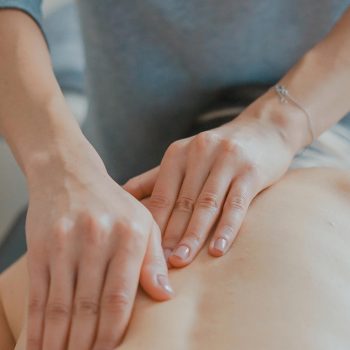It manifests itself in acute pain at the neck. It is a musculoskeletal disorder and in its presence it is difficult to perform movements of flexion, extension and rotation of the head. The torticollis is a fairly common disorder, from the sudden onset and whose resolution usually occurs spontaneously within a few days. We talk about this topic with Dr. Lara Castagnetti, osteopath and specialist in Physical Medicine and Rehabilitation of Humanitas.
What is torticollis?
What is the torticollis about? When should I go to my doctor? Among the most common causes of this disorder are muscle contractures and problems with the spine. Muscle contracture can be due to, for example, a sudden change in temperature, the assumption of incorrect positions over a long period of time, but also to sudden movements of the head and trauma: think, for example, of a whiplash in the event of an accident. In these cases, the torticollis lasts a few days and then passes. Where the disorder persists, it may conceal problems in the cervical spine, such as a condition of suffering of the intervertebral discs perhaps linked to a hernia of the disc or more rarely to spondylarthritis, autoimmune rheumatic diseases responsible for chronic inflammation of the spine.
Lukewarm shower and movement help to alleviate pain
When the pain is very severe a warm shower is what can help most: the water in fact performs a kind of massage on the muscles of the neck and relaxes them. In addition, if your doctor approves, you can take some anti-inflammatory drugs and you can possibly use kinesio taping with the application of special patches that ensure an anti-inflammatory and pain-relieving effect.
Those who suffer from torticollis often mistakenly believe that moving their heads as little as possible is the best thing to do: this is actually counterproductive. It is better to try to make small controlled movements. Standing still reduces pain immediately, but actually increases muscle stiffness and therefore pain. Thus, stretching exercises that lengthen the neck may be helpful.
What to do if the pain lasts for more than a week
If the wryneck is associated with difficulty breathing, speaking, walking or swallowing or in the presence of weakness or numbness in the limbs, it is advisable to go to the emergency room to check for any injury to the structures of the central nervous system. If the pain lasts for more than a week, it is advisable to consult your doctor for the appropriate examinations. The presence of symptoms such as headache, back pain and shoulder pain should not be underestimated. Your doctor may prescribe examinations such as radiography and magnetic resonance imaging to verify the origin of the disorder.










